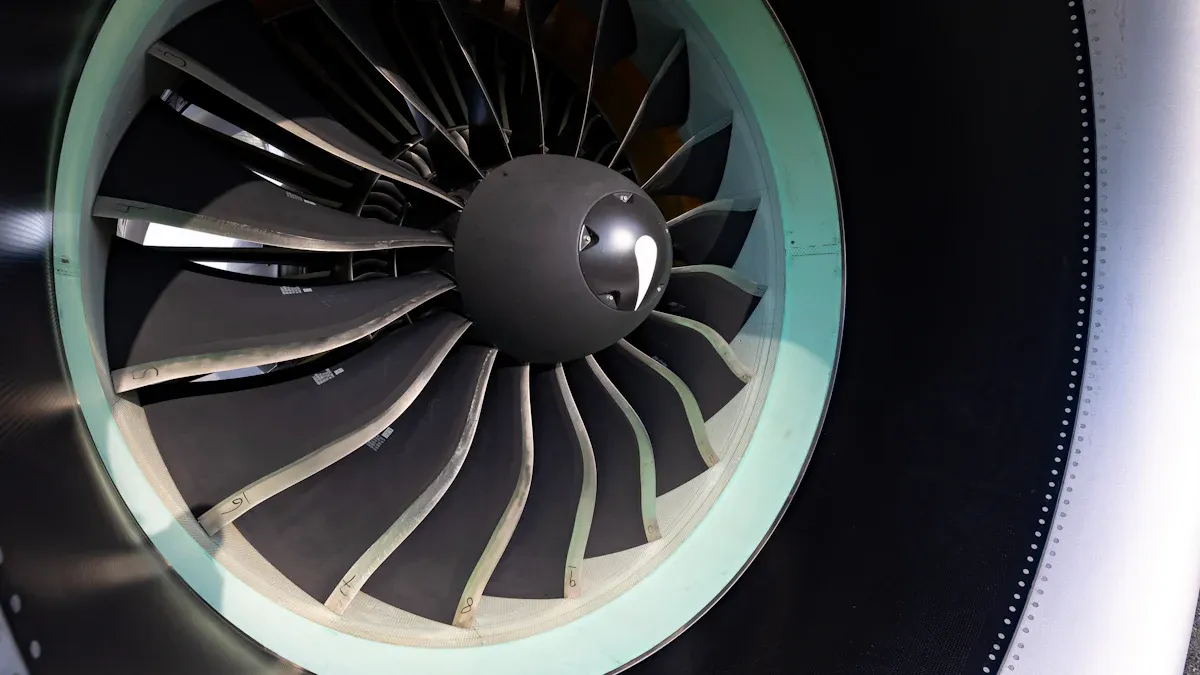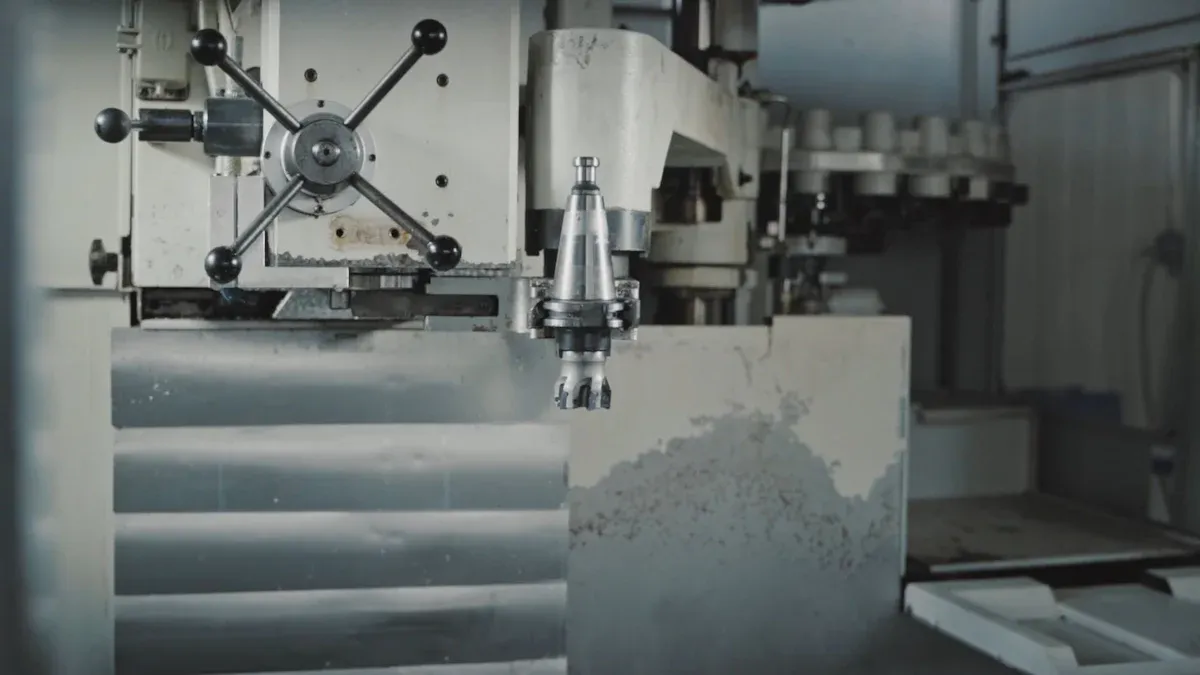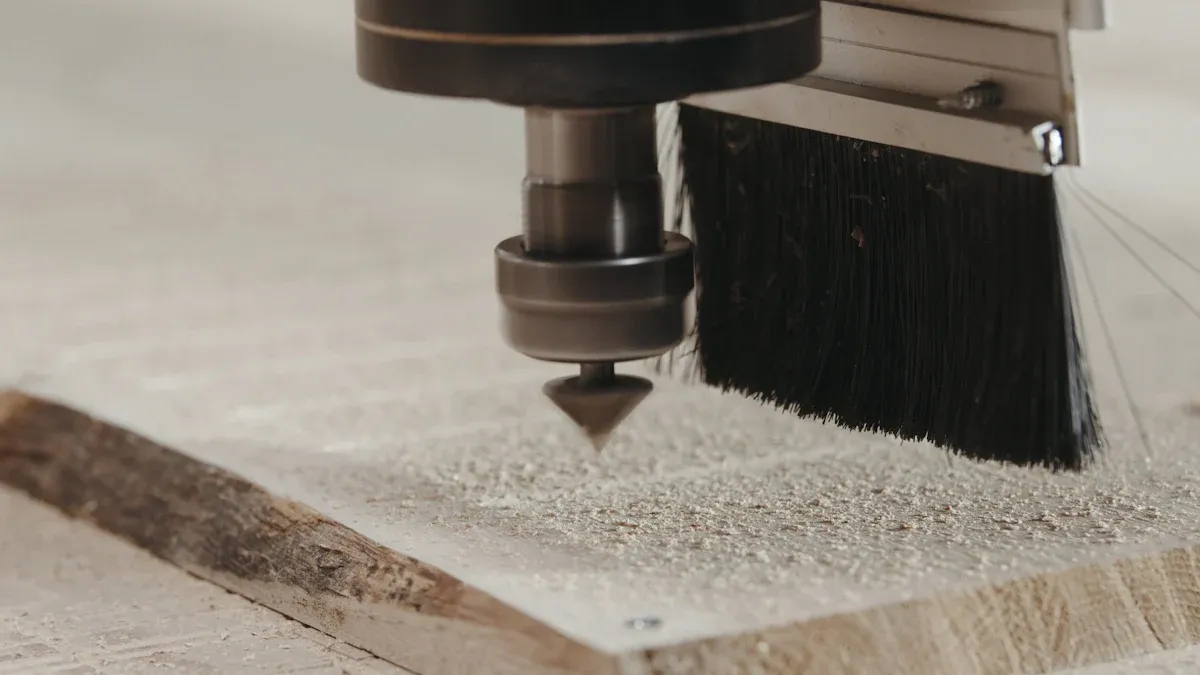Apr.
29, 2025
Contents
CNC Machining Solutions for High-Performance Drone Propulsion Systems
CNC Machining Solutions for Precision in Propulsion Components
CNC Machining Solutions for Lightweight and Strong Materials
CNC Machining Solutions for Complex Geometries
Material Versatility in CNC Machining for Drone Applications
Quality Control in CNC Machining for High-Performance Drones

CNC Machining Solutions are revolutionizing the production of drone parts. They provide exceptional accuracy and operate with high efficiency. CNC machines can manufacture components with minimal errors, as small as ±0.005 mm. This precision ensures that parts fit together seamlessly, enhancing the overall performance of drones. The motor mounts produced through CNC Machining Solutions reduce vibrations and optimize energy consumption, contributing to the stability of drones. Additionally, multi-axis CNC machines enable the creation of intricate designs that increase drone speed and decrease air resistance. With rigorous quality checks in place, CNC Machining Solutions guarantee that every component is flawless and dependable for high-performance drones.

Precision is key for drone propulsion systems to work well. CNC machining helps make parts that fit perfectly together. For important parts, tolerances as small as ±0.001″ to ±0.005″ can be achieved. This level of accuracy keeps propulsion systems safe and working properly. Parts can also be made with tiny features as small as 0.020” (0.50 mm), ensuring even the smallest details are correct.
| Standard | Description |
|---|---|
| ISO 2768 | Global tolerance rules that simplify designs and control errors in CNC machining. |
In drones and aerospace, such precision is a must. It ensures parts like motor mounts and propeller hubs work smoothly. This reduces vibrations and keeps drones steady during flight. CNC machining ensures every measurement is exact, making propulsion systems reliable.
Making parts consistently is crucial for drones to perform well. CNC machining ensures every part is made exactly the same. This accuracy improves propulsion systems by reducing energy loss and making them more efficient.
CNC machining can achieve tolerances as small as 4 microns, which is needed for fast-moving parts.
It meets strict safety standards set by groups like the FAA and EASA.
Lightweight materials, like carbon fiber, are shaped precisely for strength and low weight.
Accurate manufacturing lowers the chance of parts failing during flight. This is especially important for drones in tough conditions, where small errors can cause big problems.
Modern CNC machining reduces mistakes and saves materials. Virtual tests check machining plans before production starts. This helps avoid errors and ensures the final product is made correctly.
Optimized processes, like better tool paths, save time and reduce waste.
Strong manufacturing methods handle heat and vibrations, making parts durable.
CNC machining creates lightweight, error-free parts that improve flight and battery life.
Using these methods makes manufacturing more eco-friendly. Less waste means lower costs and helps protect the environment. CNC machining lets you build high-performance drone systems with less impact on nature.
Drones need materials that are light but also strong. CNC machining helps shape materials like aluminum, titanium, and carbon fiber with great accuracy. Aluminum is popular because it is strong, light, and resists rust. Titanium is tougher and handles harsh conditions, making it great for high-performance drones. Carbon fiber is very strong and super light, so it’s often used for drone frames and parts.
CNC machining makes sure these materials are cut to exact sizes. This is important for parts like motor mounts, propeller hubs, and frames that face stress during flight. Even with tricky materials like carbon fiber, CNC machining keeps the quality and performance consistent.
Drones need to be light but also sturdy. CNC machining helps pick and shape materials that balance weight and strength.
Aluminum alloys and advanced composites are great for this balance.
CNC machining ensures parts stay strong under tough conditions.
It creates lightweight parts that are reliable and long-lasting.
By choosing the right materials and designs, drones can perform better while staying strong enough for hard tasks.
The materials used in drones affect how long they fly and how well they work. CNC machining helps make these materials perform their best. For example, magnesium alloys make drones lighter, helping them fly longer. Carbon fiber is strong and light, improving flight and saving battery power.
| Material Type | Benefits for Drones |
|---|---|
| Magnesium Alloys | Makes drones lighter for longer flights and better efficiency. |
| Carbon Fiber Composites | Strong and light, improving flight and saving battery life. |
| Carbon Fiber-Reinforced Polymers | Light but strong, perfect for durable frames and better flight performance. |
CNC machining helps create parts that use these materials to their fullest. This makes drones work better, fly longer, and cost less to operate.

Aerodynamics is very important for drone propulsion systems. CNC machining helps make detailed designs that improve airflow. This technology creates parts with smooth shapes and exact angles. These features lower air resistance and make flights steadier. For example, motor housings and propeller blades can be shaped with great detail. This ensures air moves smoothly around them during use. CNC machining makes sure every curve and edge is accurate, helping drones perform better.
Propellers and motor housings are key for good propulsion. CNC machining lets you design these parts to fit specific needs. Propellers can have special blade shapes to give more thrust and use less energy. Motor housings can be made to cool better and weigh less while staying strong. With CNC machining, you can create parts that match your drone’s needs. This ensures they work well and stay reliable.
5-axis machining is great for making complex parts. This advanced method keeps the cutting tool at the right angle. It helps create smooth surfaces and detailed shapes. It works well for parts like motor mounts and aerodynamic frames.
5-axis machining reduces the need to move parts around, saving time.
It achieves very small tolerances, perfect for precise parts.
Production is faster, improving efficiency by 25-30% over older methods.
By using 5-axis machining, you can make detailed drone parts with high accuracy. This ensures your drones work efficiently and perform their best.
CNC machining works with many materials for drone parts. It makes lightweight pieces for long flights and strong ones for tough conditions. Advanced methods allow working with materials that have special features for different uses.
| Material | Features | Uses in Propulsion Systems |
|---|---|---|
| Titanium | Light, strong, resists rust | Great for aircraft and spacecraft parts |
| Aluminum Alloys | Light and flexible | Used in many drone structures |
| Stainless Steel | Strong, resists rust, lasts long | Important for defense and aerospace systems |
| Nickel Alloys | Handles heat and pressure well | Perfect for jet engines and rockets |
This flexibility helps drones meet safety, performance, and efficiency needs in any condition.
CNC machining works for both small tests and big production runs. For example:
A project made a drone fly quietly for 12 hours by reducing weight and saving power.
MIT showed how CNC machining creates custom drones for specific needs.
Lockheed Martin switched from 3D printing to injection molding for its Indago Quadcopter, showing how CNC machining scales up production.
These examples show CNC machining is precise and efficient for one prototype or many drones.
CNC machining meets the needs of all types of drones. Commercial drones use light materials to fly longer and save battery. Industrial drones need strong parts to carry heavy loads and handle tough jobs. Military drones use titanium and nickel alloys to work in extreme conditions.
By adjusting to these needs, CNC machining makes drones reliable for different tasks. This flexibility helps create be
Drone parts must be dependable to work well. CNC Machining Solutions use strict checks to ensure every piece is top quality. These checks include:
Full dimensional inspections to confirm parts match the design.
Material certifications to prove materials are strong and approved.
Thorough testing to check how parts work and last.
Visual checks find surface problems early. Dimensional checks make sure parts fit perfectly. Testing mimics real-world use to confirm parts work as expected. These steps make sure every piece helps the drone stay reliable.
Safety and performance depend on meeting industry rules. Certifications like AS9100D and ISO9001 show that manufacturers follow strict quality standards. The table below lists key certifications:
| Certification | What It Ensures |
|---|---|
| ISO9001 | Quality systems for better manufacturing |
| AS9100D | High standards for aviation parts |
| ISO14001 | Rules for protecting the environment |
| NADCAP | Special checks for aerospace processes |
These certifications prove drone parts are safe, efficient, and eco-friendly.
Precision needs consistency to make great parts. Statistical Process Control (SPC) tools help keep quality steady. CNC machines use real-time data to fix problems right away. The table below shows SPC benefits:
| Benefit | How It Helps |
|---|---|
| Real-Time Monitoring | Fixes machining errors as they happen. |
| Trend Analysis | Finds patterns to improve processes. |
| Continuous Improvement | Makes machining better over time for higher quality. |
Using SPC tools ensures parts are consistent, reduces mistakes, and improves drone performance.
CNC machining helps improve drone propulsion systems in big ways. It makes parts with high precision so they fit perfectly. This ensures drones work well and stay reliable. Materials like aluminum and carbon fiber are shaped to be light but strong. These designs help drones fly better and use less energy. CNC machines also create detailed shapes that improve airflow and speed. Careful quality checks make sure every part is safe and meets ind
CNC machining makes parts that fit perfectly together. It uses light and strong materials like aluminum and carbon fiber. These materials help drones fly better and save energy. Advanced methods, like 5-axis machining, create detailed designs. These designs improve airflow and make drones faster. This is why CNC machining is perfect for high-performance drones.
Yes, CNC machining is great for custom designs. You can create special propellers, motor covers, or frames for your drone. It can handle tricky shapes and still keep quality high. Even the most detailed designs will match your needs perfectly.
CNC machining makes parts that are light but strong. Lighter drones use less energy, so they fly longer. It also makes propulsion systems work better, saving even more battery power. This means drones can stay in the air for a longer time.
Yes, CNC machining works well for small or big projects. It can make one prototype or many drones with the same quality. Automated tools and real-time checks make it fast and reliable for large production runs.
CNC machining uses materials like aluminum, titanium, and carbon fiber. Aluminum is light and strong, titanium is tough for hard conditions, and carbon fiber is super light and stiff. These materials help drones work well in all kinds of jobs, from delivery to defense.
💡 Tip: Picking the right material for your drone is important. Talk to experts to find the best match for your drone’s needs.
Navigation
Navigation
Contact Us
Tel: +86 13417419143
E-mail: [email protected]
Add:
2nd Floor, Building 7, 156 High Tech Industrial Park, Fuyuan 1st Road, Zhancheng Community, Fuhai Street, Baoan District, Shenzhen City, China.